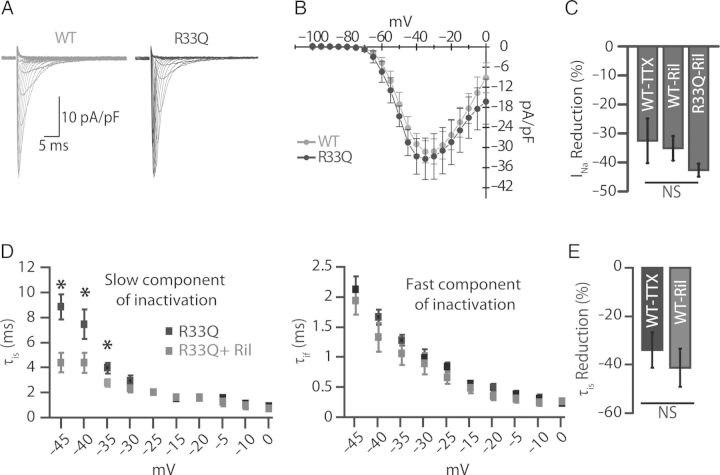Figure 2.
Effect of neuronal Na+ channel blockade with riluzole on peak Na+ current. (A) Inward Na+ currents obtained by 250 ms depolarization steps from holding potential −120 to 0 mV in 5 mV increments at 3 s intervals. (B) Corresponding peak I/V relationship (n = 9 cells from five mice for WT and n = 6 cells from two mice for R33Q). (C) Reduction of Na+ current by 100 nM TTX and 10 µM Ril (n = 5 cells from two mice for TTX, n = 7 cells from two mice for Ril in WT, and n = 4 cells from two mice for Ril in R33Q, *P < 0.05). (D) The decaying phase of Na+ current traces was fitted to 2-exponential function yielding two time constants, one slow (τis) and the other to fast component (τif). The effect of 10 µM Ril in R33Q cardiomyocytes (n = 4 cells from two mice, *P < 0.05) on the decaying phase of Na+ current with two components, slow (τis) and a fast (τif). (E) Reduction of the slow (τis) component of decaying phases of Na+ current by 100 nM TTX and 10 µM Ril in WT cardiomyocytes (n = 4 cells from two mice and n = 6 cells from two mice, respectively, *P < 0.05).

